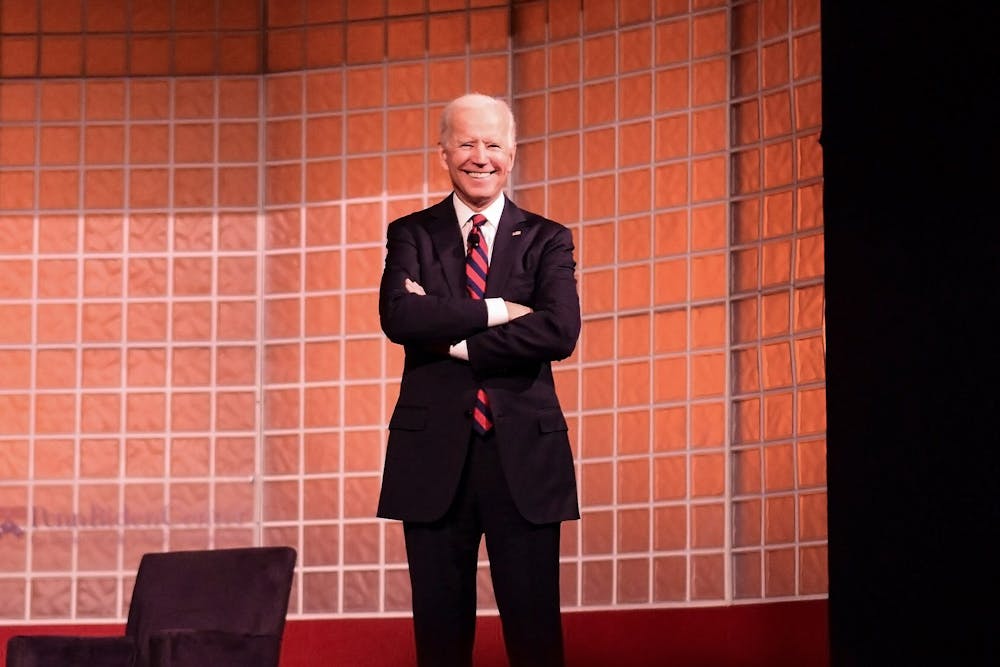
Last Thursday, former Penn Presidential Professor of Practice and President of the United States Joe Biden participated in a CNN town hall. During the event, Biden was asked how he would make student debt forgiveness happen. In response, the 46th President stated that debt forgiveness should be limited to $10,000 per student, specifically arguing that it made little sense to forgive student loans held by students who went to schools such as Penn.
In response, many news outlets and columnists have pointed out that just 0.3% of federal student borrowers are Ivy League students, and that the majority of them come from affluent backgrounds. As such, the logical conclusion is that students at Ivy League schools need minimal debt relief, if they receive any at all. While this argument correctly notes that most student loan borrowers do not attend Ivy League schools, and thus that shouldn’t be a factor in student loan policy, both Biden and his critics ignore a painful reality: student loan debt is a problem both at Penn and Ivy League schools. Any student debt plan must therefore address the crisis that all students, including those at Ivies, face.
In theory, debt should not be a problem for Penn students. According to the University website, “no loans [are] included in students’ financial aid awards,” and many students can and do graduate debt-free. However, a sizable minority do not; 32% of 2015 Penn graduates, for example, took out student loans, resulting in an average of $18,900 in federal and nonfederal student loan debt. Even if Biden’s $10,000 proposal applied to Ivy League students, it would still leave many with thousands of dollars of debt.
Penn is not the only Ivy with a student debt problem. At Cornell, 41% of students graduate with student debt. At Harvard, the richest school in the country by endowment, 23% of students graduate with debt. Multiple Ivy League alumni have come forward to share their individual stories in light of Biden’s comments, noting how Ivy League graduates who take out student debt often find it difficult to find well-paying jobs due to structural inequalities, as well as the extreme lengths many have to go to in order to pay off such debt.
These facts perpetuate structural inequalities deeply rooted in Ivy League admissions, and can fuel the perception that Ivy League schools are unaffordable. Ivy League schools often have steep sticker prices; Penn, for instance, requires a tuition payment of $53,166 on top of housing, dining, and other expenses. Although each Ivy typically offers no-loan packages to families making less than $60,000 per year, students are often forced to take other loans for a number of reasons, such as paying for everyday expenses and meeting other costs. Thus, many qualified students do not apply to Ivy League schools because they believe them to be unaffordable. This results in a continued lack of socioeconomic diversity at many Ivy League schools, including Penn.
The Ivy League is an easy scapegoat for many. Critics often assume that students at an Ivy League school are privileged or soon to be so, and as a result not require any assistance. However, the reality is the complete opposite: student debt is a real issue at these eight schools, and policymakers ought to pay attention.
Editorials represent the majority view of members of The Daily Pennsylvanian, Inc. Editorial Board, which meets regularly to discuss issues relevant to Penn's campus. Participants in these meetings are not involved in the reporting of articles on related topics.
The Daily Pennsylvanian is an independent, student-run newspaper. Please consider making a donation to support the coverage that shapes the University. Your generosity ensures a future of strong journalism at Penn.
Donate




